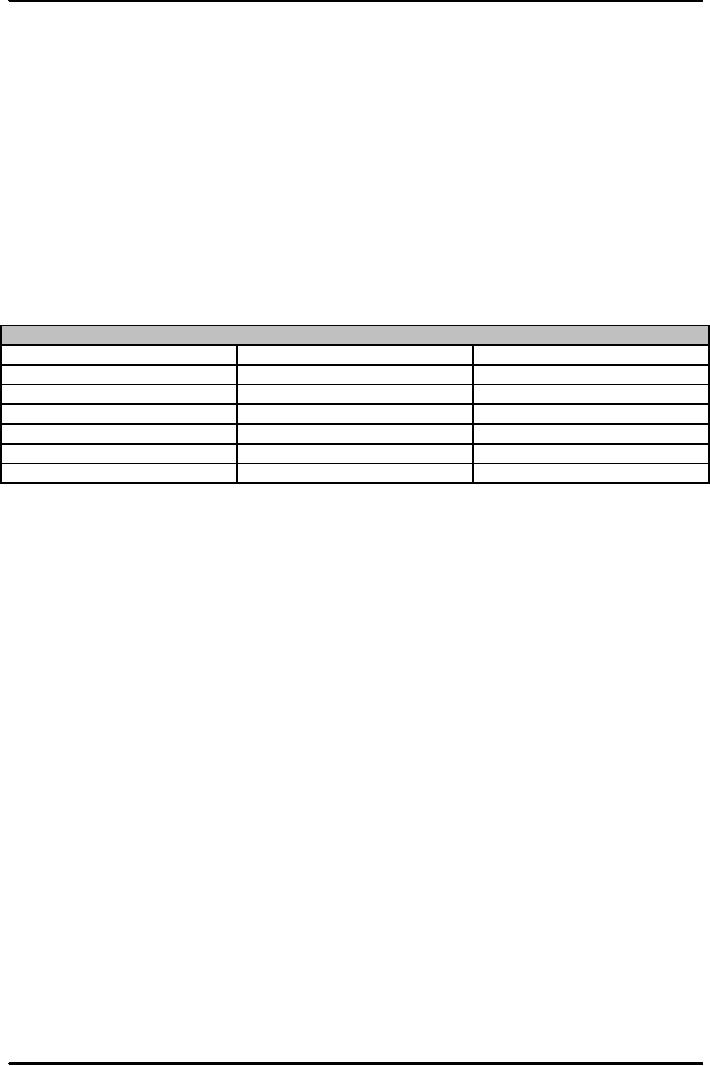 |
TIME VALUE OF MONEY:Future Value, Present Value |
| << FINANCIAL INSTITUTIONS:The structure of the financial industry |
| APPLICATION OF PRESENT VALUE CONCEPTS:Compound Annual Rates >> |

Money
& Banking MGT411
VU
Lesson
8
TIME
VALUE OF MONEY
Time
Value of Money
Future
Value Concepts
Present
value
Application
in financial environment
Time
Value of Money
Credit
is one of the critical mechanisms we have
for allocating
resources.
Even
the simplest financial transaction, like
saving some of your paycheck
each month to buy a
car,
would be impossible.
Corporations,
most of which survive from
day to day by borrowing to
finance their
activities,
would
not be able to
function.
Yet
even so, most people still
take a dim view of the fact
that lenders charge interest.
The
main reason for the enduring
unpopularity of interest comes from the
failure to appreciate
the
fact that lending has an
opportunity cost.
Think
of it from the point of view of the
lender.
Extending
a loan means giving up the
alternatives. While lenders can
eventually recoup the sum
they
lend, neither the time that
the loan was outstanding nor
the opportunities missed during
that
time
can be gotten back.
So
interest isn't really "the
breeding of money from
money,'' as Aristotle put
it; it's more like a
rental
fee that borrowers must pay
lenders to compensate them for lost
opportunities.
It's
no surprise that in today's world,
interest rates are of enormous
importance to virtually
everyone
Individuals,
businesses, and governments
They
link the present to the future,
allowing us to compare payments
made on different
dates.
Interest
rates also tell us the
future reward for lending
today, as well as the cost of
borrowing
now
and repaying later.
To
make sound financial decisions, we
must learn how to calculate and
compare different
rates
on
various financial instruments
Future
Value
Future
Value is the value on some
future date of an investment
made today.
To
calculate future value we multiply the
present value by the interest rate
and add that amount
of
interest to the present value.
PV
+
Interest
=
FV
PV
+
PV*i
=
FV
$100
+ $100(0.05)
=
$105
PV
= Present Value
FV
= Future Value
i
= interest rate (as a percentage)
The
higher the interest rate (or the amount
invested) the higher the future
value.
Future
Value in one year
FV
= PV*(1+i)
22

Money
& Banking MGT411
VU
Now
we need to figure out what
happens when the time to repayment
varies
When
we consider investments with interest payments
made for more than one year
we need to
consider
compound interest, or the fact that
interest will be paid on interest
Future
Value in two
years
$100+$100(0.05)
+$100(0.05) + $5(0.05)
=$110.25
Present
Value of the Initial Investment +
Interest on the initial investment in the
1st Year + Interest
on
the
initial investment in the 2nd
Year+ Interest on the Interest
from the 1stYear in the 2nd
Year
=
Future Value in Two
Years
General
Formula for compound interest
Future value of an investment of PV in n
years at interest rate
i
(measured as a decimal, or 5% =
.05)
FVn = PV*(1+i) n
Table:
Computing the Future Value
of $100 at 5% annual interest
rate
Years
into future
Computation
Future
value
1
$100(0.5)
$105.00
2
2
$100(0.5)
$110.25
3
3
$100(0.5)
$115.76
4
4
$100(0.5)
$121.55
5
5
$100(0.5)
$127.63
10
10
$100(0.5)
$162.89
Note:
Both
n and i must be measured in same
time units--if i is annual,
then n must be in years, so
future
value
of $100 in 18 months at 5% is
FV
= 100 *(1+.05)1.5
How
useful it is?
If
you put $1,000 per year
into bank at 4% interest, how
much would you have saved
after 40
years?
Taking
help of future value concept, the
accumulated amount through the saving
will be
$98,826
more than twice the $40,000
you invested
How
does it work?
The
first $1,000 is deposited for 40
years so its future value
is
$1,000
x (1.04)40 = 4,801.02
The
2nd $1,000 is deposited for 39
years so its future value
is
$1,000
x (1.04)39 = 4,616.37
And
so on.....up to the $1,000 deposited in the
40th year
Adding
up all the future values gives
you the amount of $98,826
Present
Value
Present
Value (PV) is the value
today (in the present) of a
payment that is promised to be
made
in
the future. OR
Present
Value is the amount that must be
invested today in order to
realize a specific amount on
a
given future date.
To
calculate present value we invert the
future value
calculation;
We
divide future value by one
plus the interest rate (to find the
present value of a payment to
be
made
one year from now).
Solving
the Future Value
Equation
23

Money
& Banking MGT411
VU
FV
= PV*(1+i)
Present
Value of an amount received in one
year.
Example:
$100
received in one year,
i=5%
PV=$100/
(1+.05) = $95.24
Note:
FV
= PV*(1+i) = $95.24*(1.05) =
$100
For
payments to be made more than one
year from now we divide
future value by one plus
the
interest
rate raised to the nth power where n is the number of
years
Present
Value of $100 received n
years in the future:
Example
Present
Value of $100 received in 2 ½
years and an interest rate of
8%.
PV
= $100 / (1.08)2.5 = $82.50
Note:
FV
=$82.50 * (1.08)2.5 = $100
24
Table of Contents:
- TEXT AND REFERENCE MATERIAL & FIVE PARTS OF THE FINANCIAL SYSTEM
- FIVE CORE PRINCIPLES OF MONEY AND BANKING:Time has Value
- MONEY & THE PAYMENT SYSTEM:Distinctions among Money, Wealth, and Income
- OTHER FORMS OF PAYMENTS:Electronic Funds Transfer, E-money
- FINANCIAL INTERMEDIARIES:Indirect Finance, Financial and Economic Development
- FINANCIAL INSTRUMENTS & FINANCIAL MARKETS:Primarily Stores of Value
- FINANCIAL INSTITUTIONS:The structure of the financial industry
- TIME VALUE OF MONEY:Future Value, Present Value
- APPLICATION OF PRESENT VALUE CONCEPTS:Compound Annual Rates
- BOND PRICING & RISK:Valuing the Principal Payment, Risk
- MEASURING RISK:Variance, Standard Deviation, Value at Risk, Risk Aversion
- EVALUATING RISK:Deciding if a risk is worth taking, Sources of Risk
- BONDS & BONDS PRICING:Zero-Coupon Bonds, Fixed Payment Loans
- YIELD TO MATURIRY:Current Yield, Holding Period Returns
- SHIFTS IN EQUILIBRIUM IN THE BOND MARKET & RISK
- BONDS & SOURCES OF BOND RISK:Inflation Risk, Bond Ratings
- TAX EFFECT & TERM STRUCTURE OF INTEREST RATE:Expectations Hypothesis
- THE LIQUIDITY PREMIUM THEORY:Essential Characteristics of Common Stock
- VALUING STOCKS:Fundamental Value and the Dividend-Discount Model
- RISK AND VALUE OF STOCKS:The Theory of Efficient Markets
- ROLE OF FINANCIAL INTERMEDIARIES:Pooling Savings
- ROLE OF FINANCIAL INTERMEDIARIES (CONTINUED):Providing Liquidity
- BANKING:The Balance Sheet of Commercial Banks, Assets: Uses of Funds
- BALANCE SHEET OF COMMERCIAL BANKS:Bank Capital and Profitability
- BANK RISK:Liquidity Risk, Credit Risk, Interest-Rate Risk
- INTEREST RATE RISK:Trading Risk, Other Risks, The Globalization of Banking
- NON- DEPOSITORY INSTITUTIONS:Insurance Companies, Securities Firms
- SECURITIES FIRMS (Continued):Finance Companies, Banking Crisis
- THE GOVERNMENT SAFETY NET:Supervision and Examination
- THE GOVERNMENT'S BANK:The Bankers' Bank, Low, Stable Inflation
- LOW, STABLE INFLATION:High, Stable Real Growth
- MEETING THE CHALLENGE: CREATING A SUCCESSFUL CENTRAL BANK
- THE MONETARY BASE:Changing the Size and Composition of the Balance Sheet
- DEPOSIT CREATION IN A SINGLE BANK:Types of Reserves
- MONEY MULTIPLIER:The Quantity of Money (M) Depends on
- TARGET FEDERAL FUNDS RATE AND OPEN MARKET OPERATION
- WHY DO WE CARE ABOUT MONETARY AGGREGATES?The Facts about Velocity
- THE FACTS ABOUT VELOCITY:Money Growth + Velocity Growth = Inflation + Real Growth
- THE PORTFOLIO DEMAND FOR MONEY:Output and Inflation in the Long Run
- MONEY GROWTH, INFLATION, AND AGGREGATE DEMAND
- DERIVING THE MONETARY POLICY REACTION CURVE
- THE AGGREGATE DEMAND CURVE:Shifting the Aggregate Demand Curve
- THE AGGREGATE SUPPLY CURVE:Inflation Shocks
- EQUILIBRIUM AND THE DETERMINATION OF OUTPUT AND INFLATION
- SHIFTS IN POTENTIAL OUTPUT AND REAL BUSINESS CYCLE THEORY